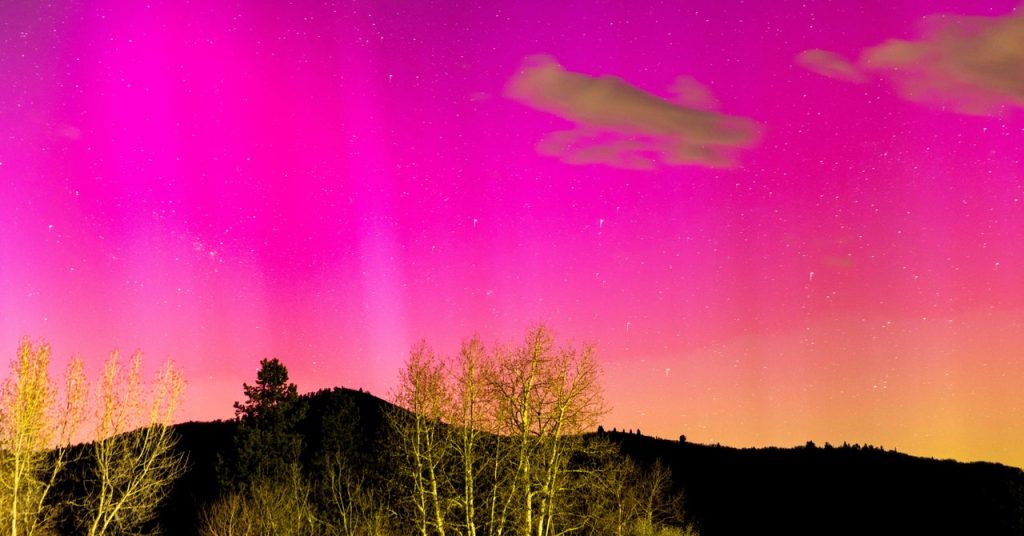The Aurora Borealis: A Spectacular Light Show
The aurora borealis, typically seen in northern regions, recently dazzled the night sky as far south as Texas and Hawaii. People stopped their cars to capture the stunning pink and green lights.
What Causes the Aurora Borealis?
The recent light show was triggered by an intense solar event. The sun’s outer gases form a plasma under extreme heat, where electrons are stripped from atoms, creating free electrical charges. Some particles escape the sun’s gravity, forming the “solar wind.”
Solar Wind and Comets
When the solar wind hits a comet, it pushes ionized gas away, forming a tail that can stretch millions of miles. Interestingly, the tail extends away from the sun, not behind the comet.
Why Now?
Every 11 years, the sun’s magnetic field flips due to its unstable nature. This last occurred in 2013, and now in 2024, we see the effects. The sun’s magnetic field twists and warps, creating sunspots and solar flares.

At the solar cycle’s peak, magnetic fields eject electrons and protons into space at speeds up to 1.5 million miles per hour. This phenomenon, known as a coronal mass ejection, occurred on May 10, causing the recent auroras.

Neon Lights and Atmospheric Gases
Neon lights work by sending an electric current through gases, causing them to emit light. Similarly, the aurora borealis is created by atmospheric gases excited by solar particles and Earth’s magnetic field. Oxygen emits green and red light, while nitrogen produces blue or purple hues.
Earth’s Magnetic Field
Earth’s magnetic field also changes due to the solar wind. The influx of charged particles distorts the field, creating the mesmerizing auroras. Interestingly, the aurora is present during the day but is invisible to the naked eye.
Impacts of Space Weather
While beautiful, space weather can be hazardous. Astronauts and high-altitude aircraft face increased radiation. Satellites can suffer from electrical damage and increased atmospheric drag, potentially causing them to veer off course or fall.
On Earth, solar storms can disrupt communication and navigation systems and even cause power outages. A changing magnetic field can generate currents in power lines, leading to blown fuses and damaged transformers. In 1859, solar storms set telegraph offices on fire.

It’s fascinating how events on the sun, 93 million miles away, can impact Earth. That’s the power of space weather!

2 Comments
Solar activity’s just showing off, that’s why!
Are the Northern Lights getting more intense, or are we just paying more attention to them now?